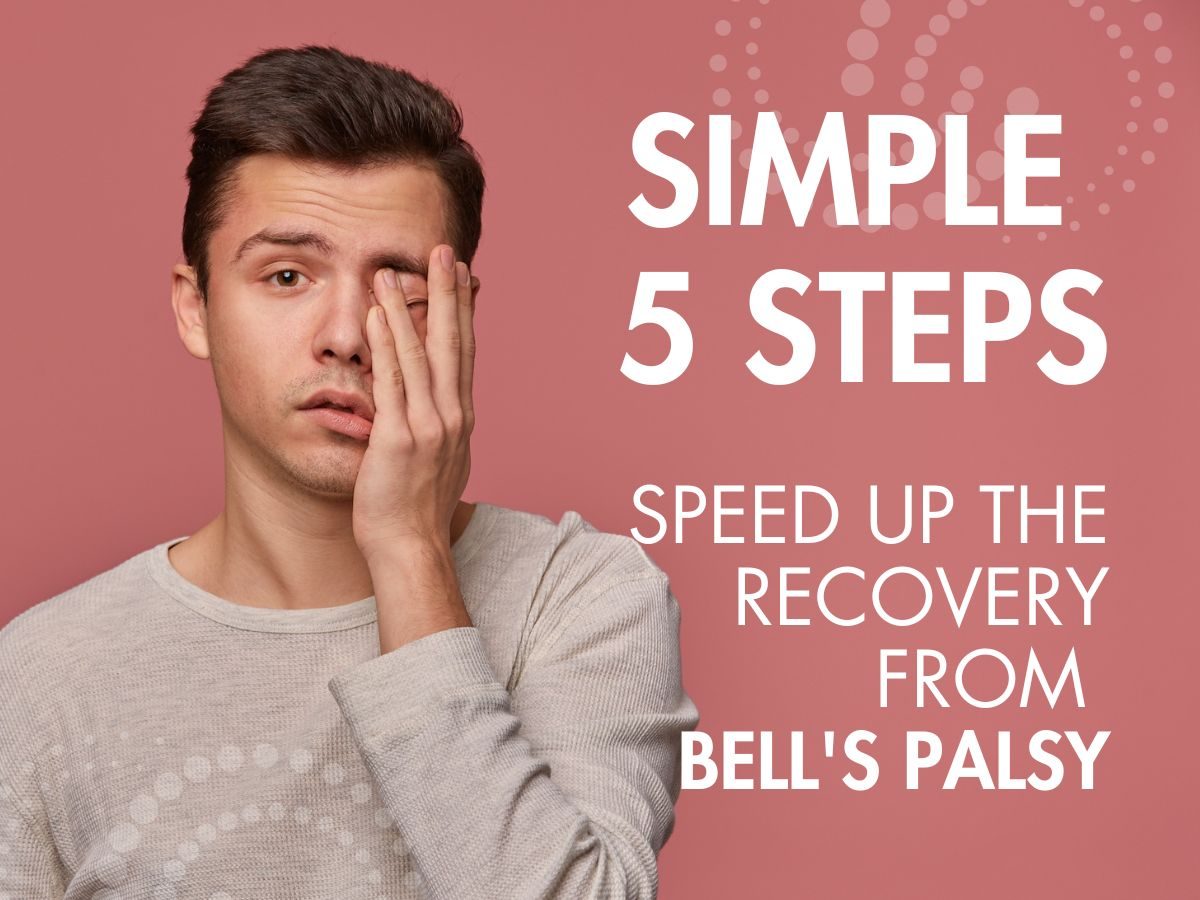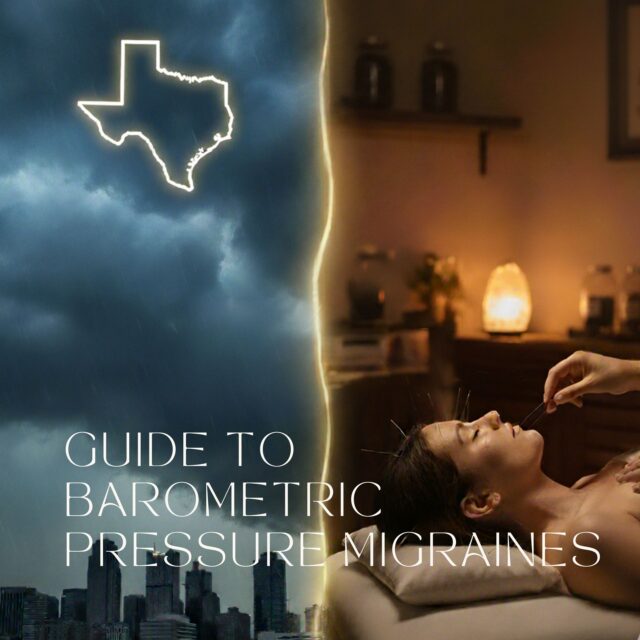Living in Plano, you know the weather changes. Sudden storms and fronts cause barometric pressure migraines. Get help for the...
Read MoreHow to Alleviate Synkinesis When You Smile (Bell’s Palsy)

September 20, 2025
How to Make Your Smile More Naturally From Bell's Palsy's Side Effect
Hi, it’s Satoru from hariQ acupuncture & herbs. In this blog post, I would like to give you advice on how to alleviate the side effects of prolonged, unhealed Bell’s Palsy, known as Synkinesis. After 3 to 4 months from the onset of Bell’s Palsy, your facial muscles may begin to tighten and contract involuntarily. This can cause your eye to appear smaller when you move your mouth, such as when puckering or puffing your cheeks. Due to the unhealed facial nerves, you may experience a feeling of being stuck in your cheek or a tightness in your eyelid, and sometimes you may experience twitching in your eyelids. So, I will provide recommendations for managing prolonged Bell’s Palsy to help prevent or alleviate these sykinesis symptoms.
We understand this can be a lot of information and overwhelming: if you are looking for more support and answers, set up a free consultation with our Bell’s Palsy Specialist, Satoru Ozawa. Share your story, get your questions answered, and learn how you can set yourself up for tremendous success in achieving a healthy life.
What is Bell's Palsy?
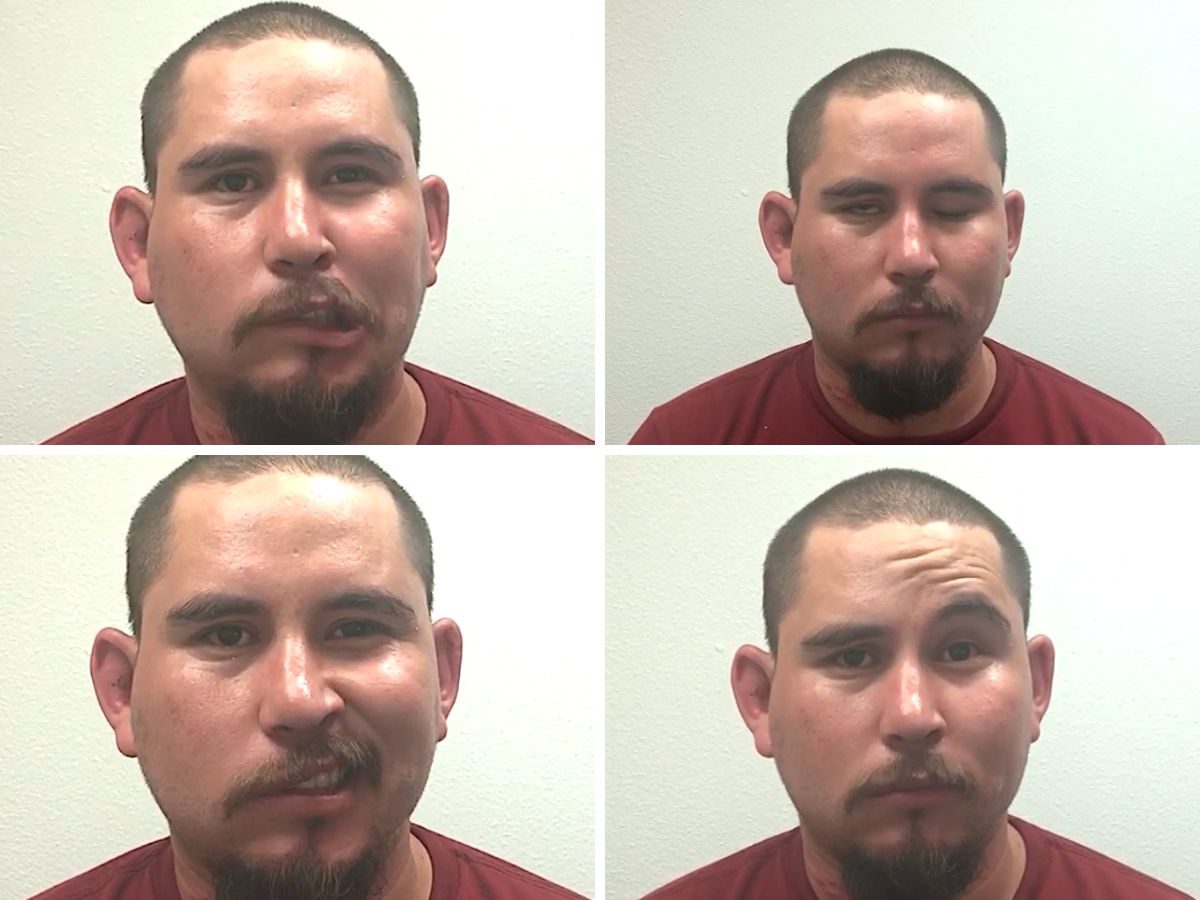
Bell’s palsy is a medical condition that affects only one side of your face, causing facial paralysis. This results in a drooping mouth, inability to close your affected eye, raise your eyebrow, a frown face, smile, and other symptoms. These symptoms occur when the facial nerve is damaged or swollen, preventing it from signaling the facial muscles to move.
If you just have acute Bell’s palsy, please check out my other blog post, What To Do When You Get Bell’s Palsy: Simple Advice
What is Synkinesis?
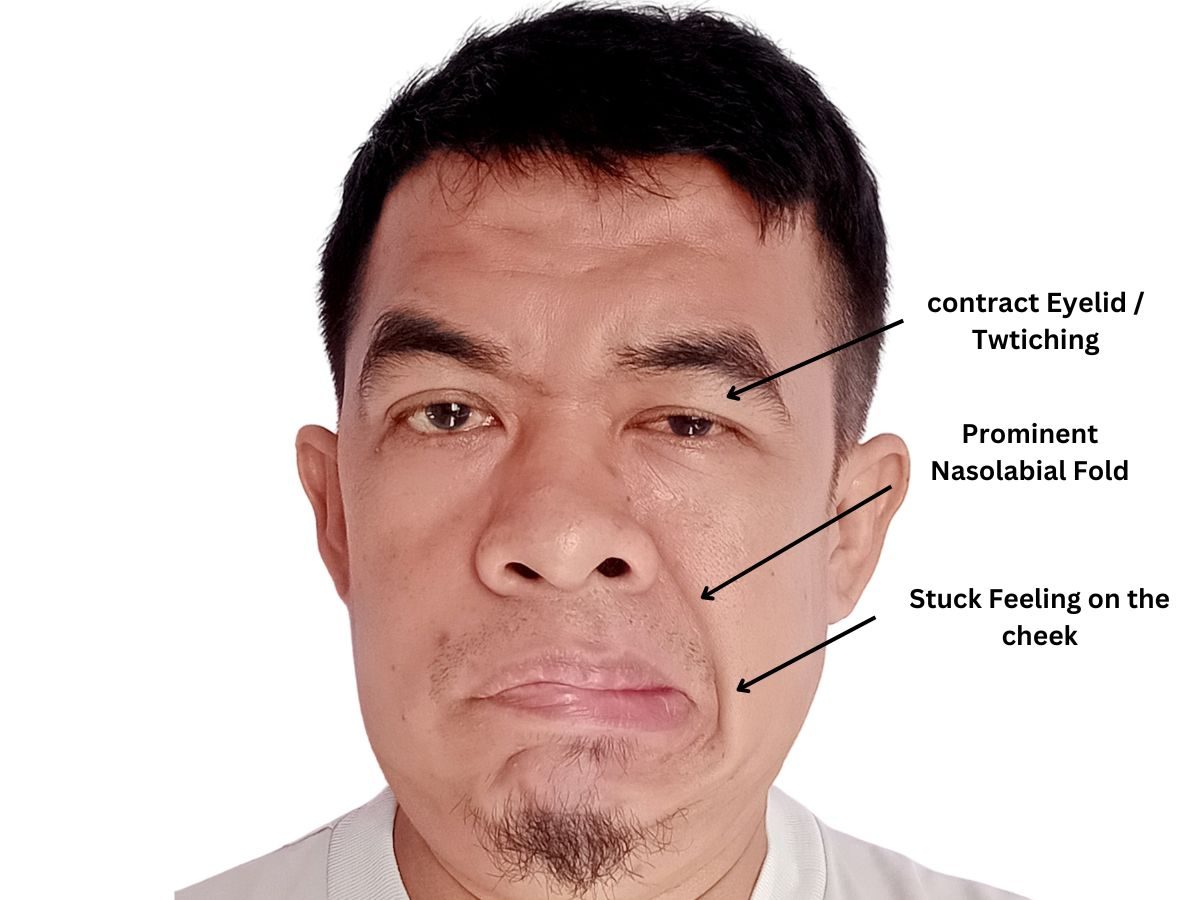
Synkinesis is the abnormal, involuntary movement of facial muscles that happens when a person tries to move a different set of muscles. This condition is often caused by nerve damage, usually due to trauma, injury, or Bell’s Palsy, and can lead to a loss of control over facial movements. For example, a person with synkinesis might involuntarily close their eye when trying to smile.
Synkinesis most likely starts developing after 3-4 months of the onset of Bell’s palsy. The beginning symptom is a stuck feeling on the cheek, especially in the morning. Because some of the facial nerves are damaged and some are healed, your cheek muscles try to compensate, and your facial muscles lose flexibility and elasticity.
If left unhealed Bell’s palsy, the nasolabial fold may become more prominent, causing twitching or weakness in the eyelid and eventually reducing flexibility and mobility.
What to do with Synkinesis
Unfortunately, synkinesis is not reversible and is unavoidable. However, by taking care every day, you can minimize the symptoms and achieve more natural facial movements and smiles.
What to do with Synkinesis
So, what to do with these symptoms? Stretching is one of the best modalities you can do every day for synkinesis. Because unhealed damaged nerve doesn’t send signal enough to contract and relax the muscle every time you smile, the muscle tend to contract and stay there leading to lose the flexibility and stretching. I’m going to demonstrate you one of the most common stretching your face to minimize the symptoms like stuck feeling in your cheek and twitching your eyelid and prominent nasolabial fold.
1. Stretching Zygomaticus muscle

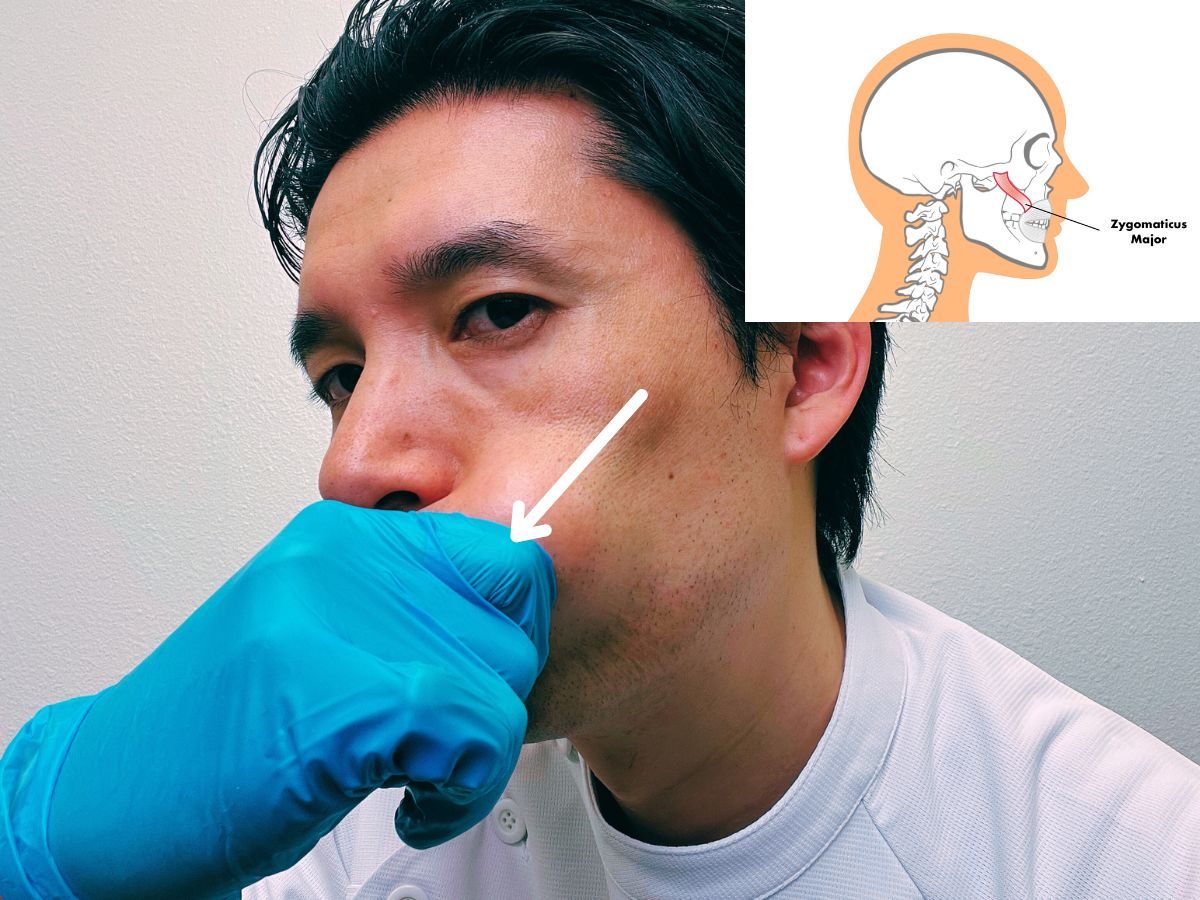
There is one theory about why synkinesis occurs because of the tightness of the zygomaticus muscle. When you touch your cheek bone, you might feel the affected side of your face is prominent and bigger than the healthy side. This indicates that the muscles on the cheeks, especially the zygomaticus muscles, are contracted and tightened and don’t go back where they are supposed to be.
First, you can wear a globe. Make sure you cut your nail so you don’t injure inside of your mouth. Put your thumb inside of your mouth and touch at the end of the corner. Pinch and lift up little bit and pull down towards to the mouth diagonally for 6 seconds. You can feel the thickness and tightness of the mucless. You can repeat 5 more times.
2. Stretching Levator Labialis superioris
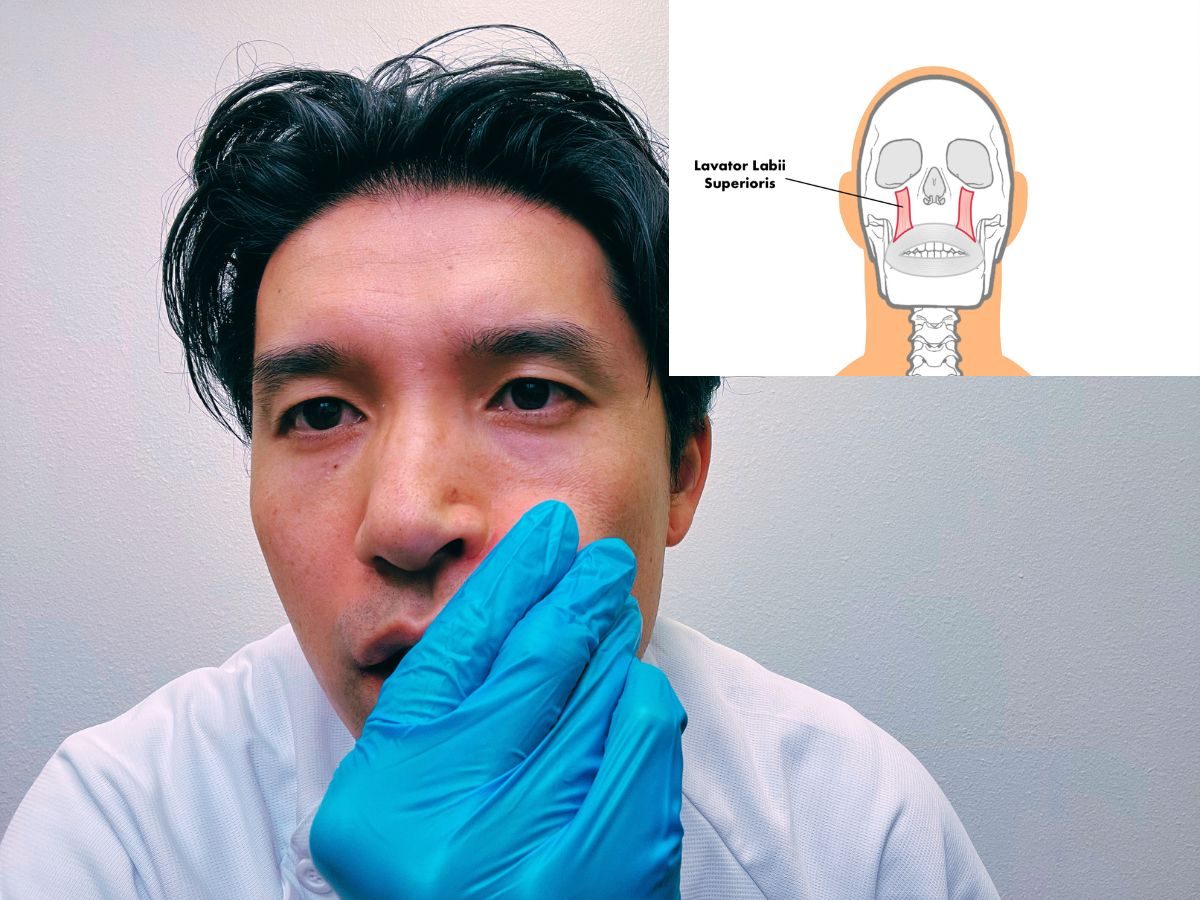
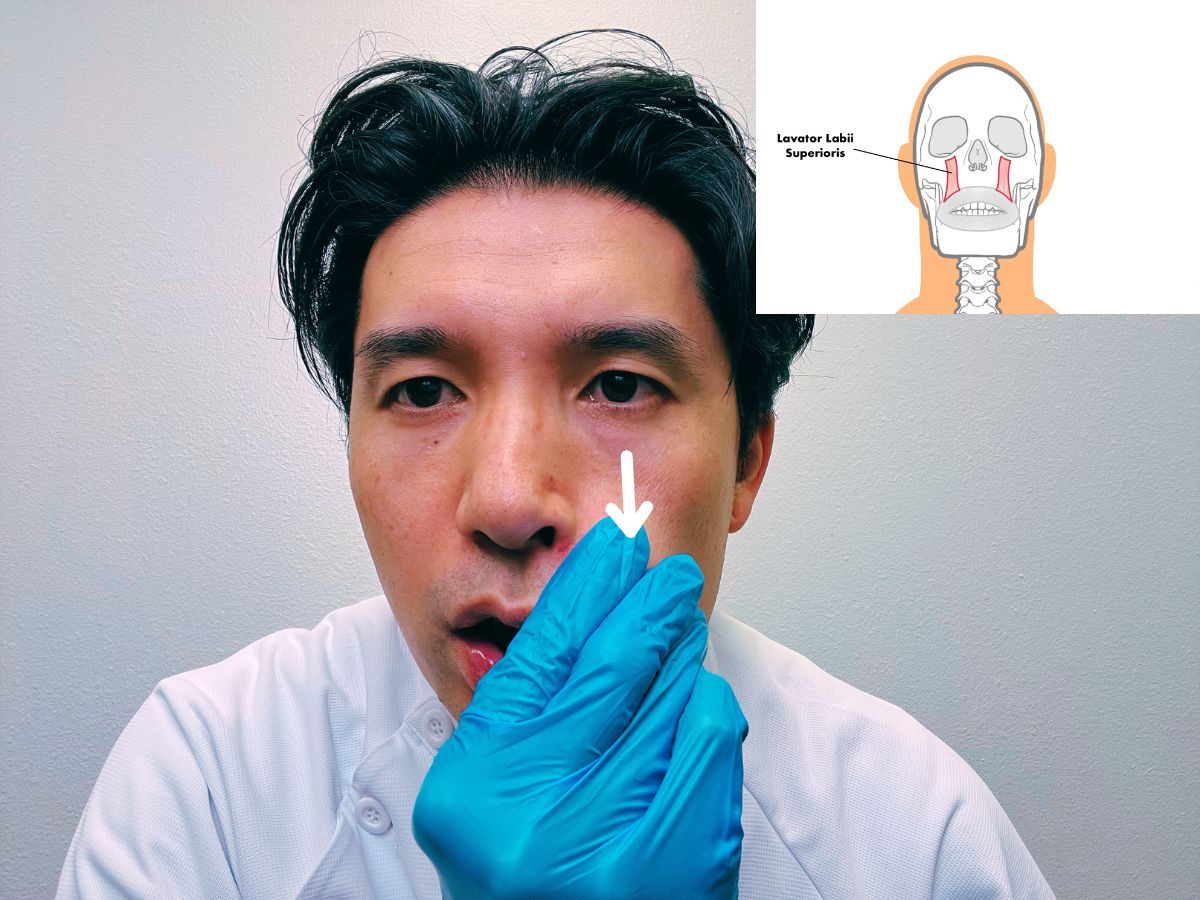
Next, there are muscles from the eyelid muscle to mouth called Levator Labialis Superioris and alaeque nasi. One muscle is attached to the inner corner of the eyebrow to mouth. So, you can pinch at the corner of the nasal and use the other hand and pull at the inner corner of the eyebrow. Then, pull against each other to stretch this muscle for 6 seconds. Repeat this 5 more times.
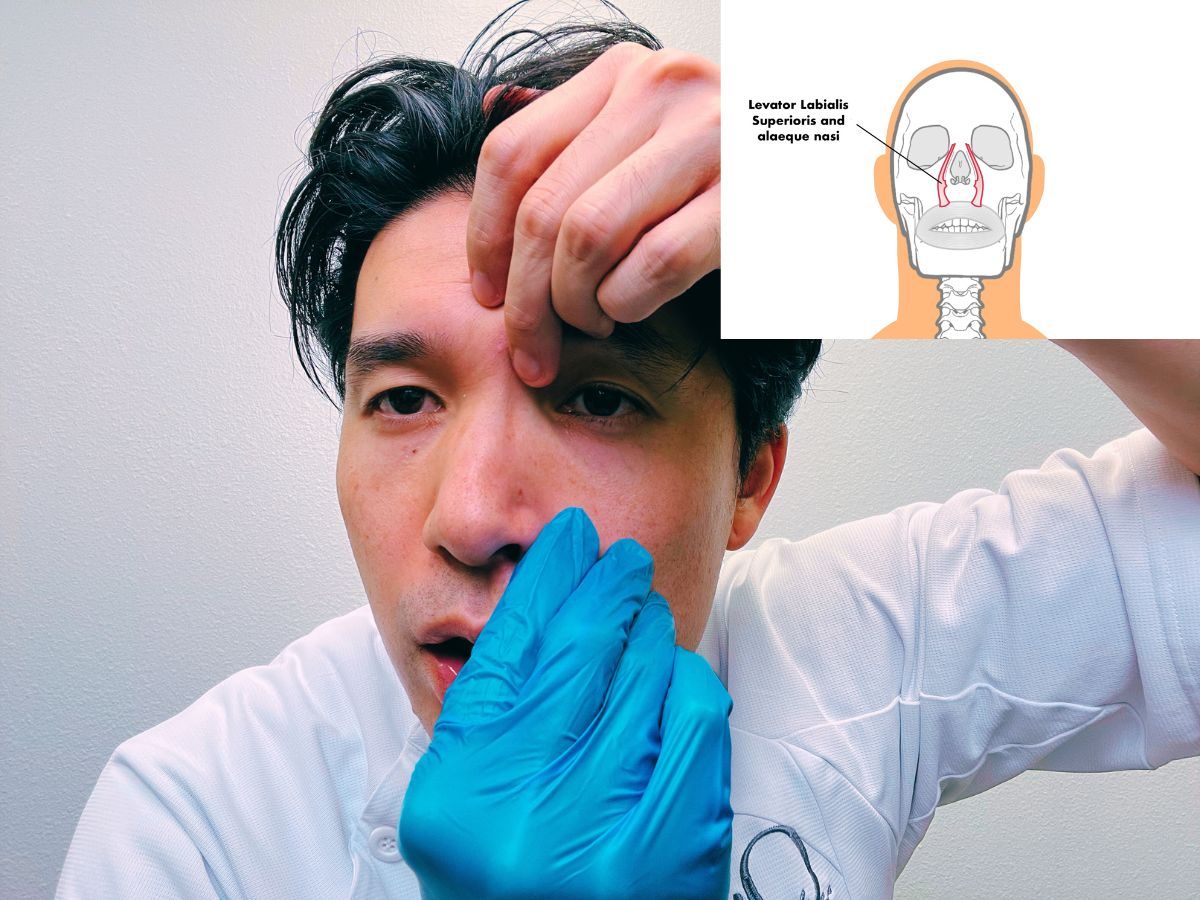
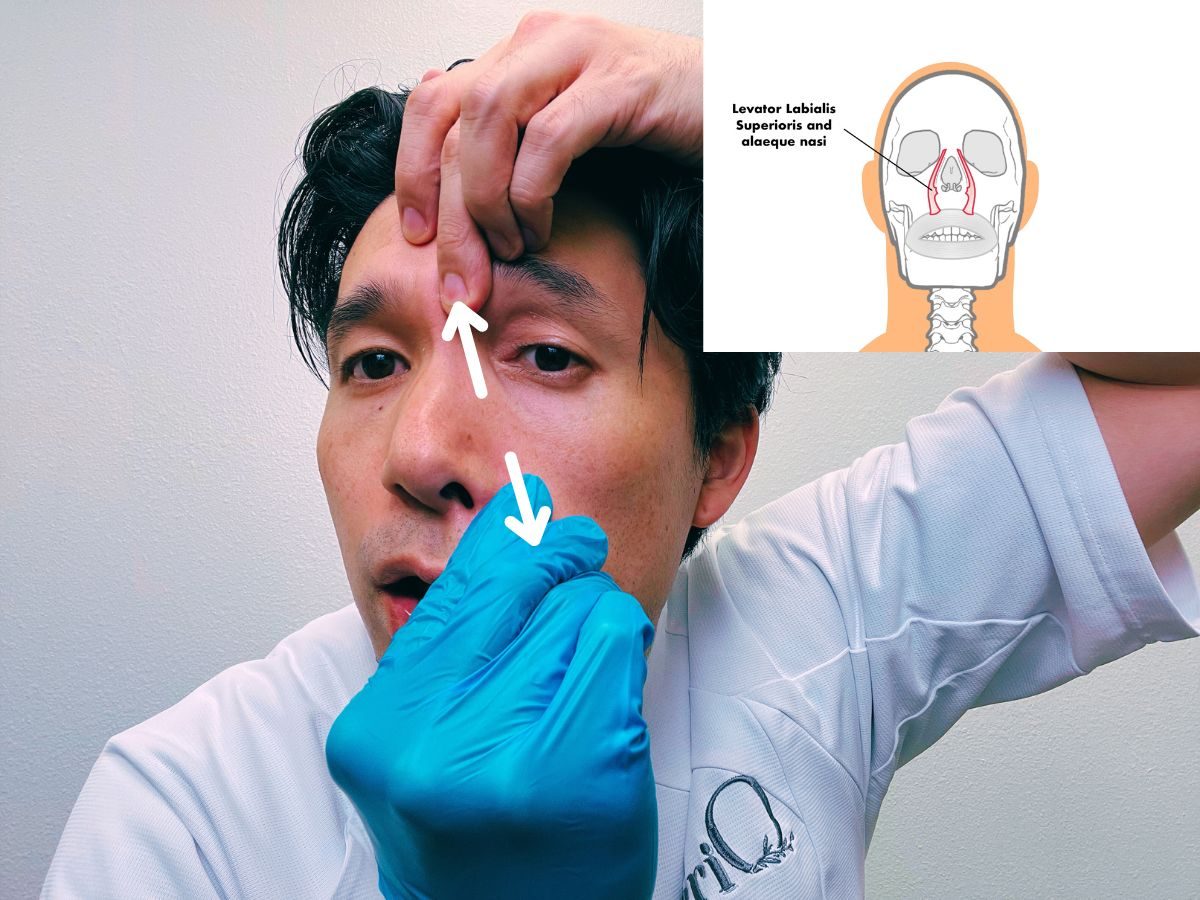
The second muscle comes from below the eyelid to the mouth. You can pinch the mouth and pull down and use the other hand to pull up. Stretch this muscle for 6 seconds. Repeat this 6 more times.
3. Stretching Buccinator & Risorius
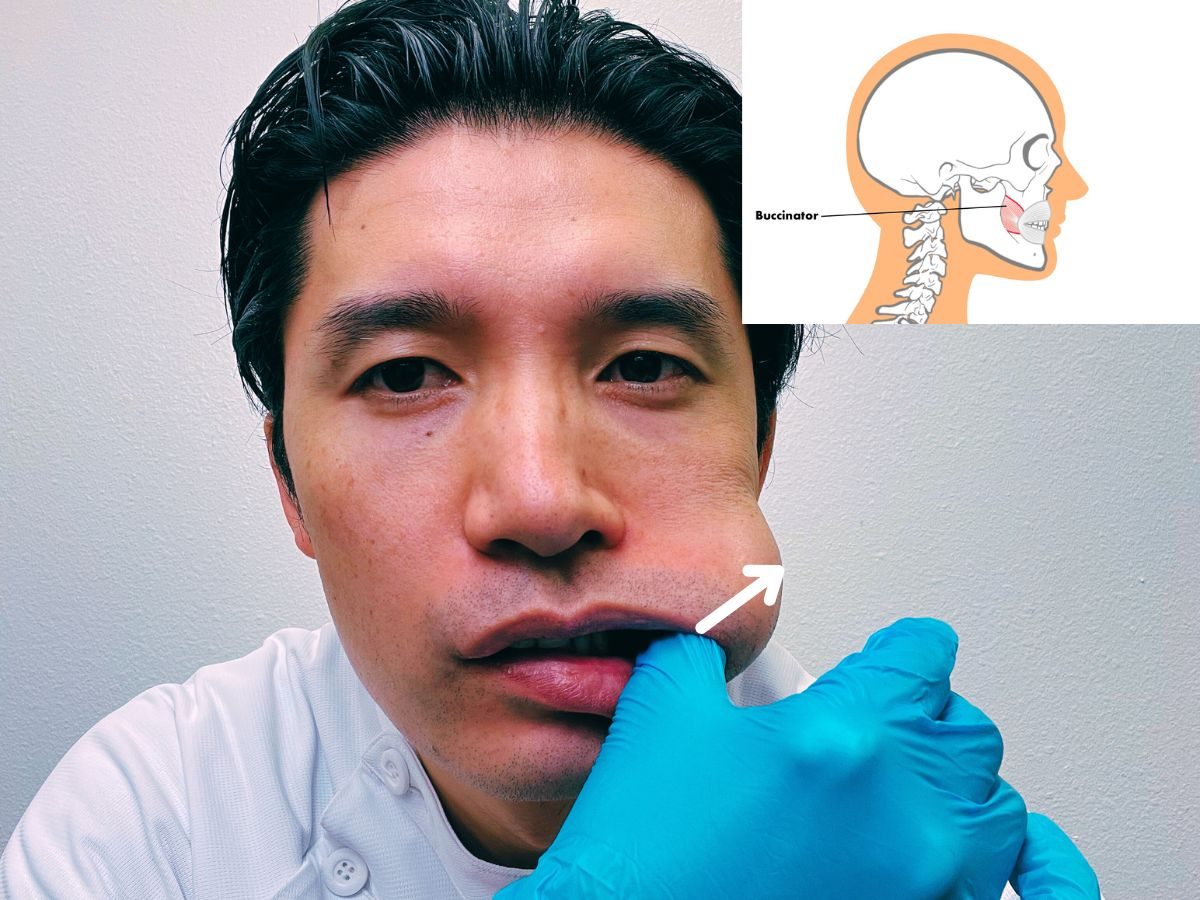
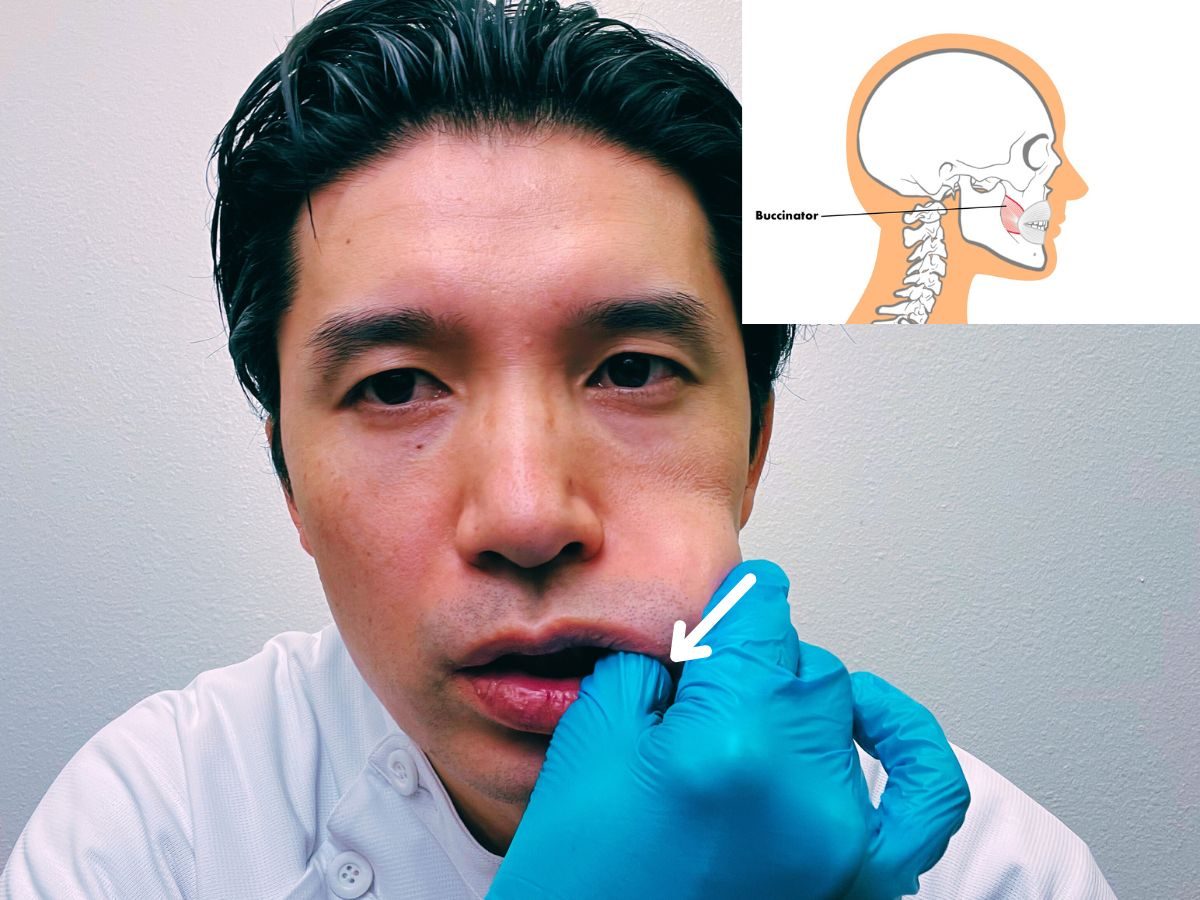
The third step is to stretch the Buccinator & Risorius. This muscle is attached at the cheek make your muscle pucker your mouth or blowing. This muscle is follow the transverse. You can use your thumb and stretch your cheek. Repeat this 5 more times.
4. Stretching Depressor Labii inferioris & depressor angularis oris
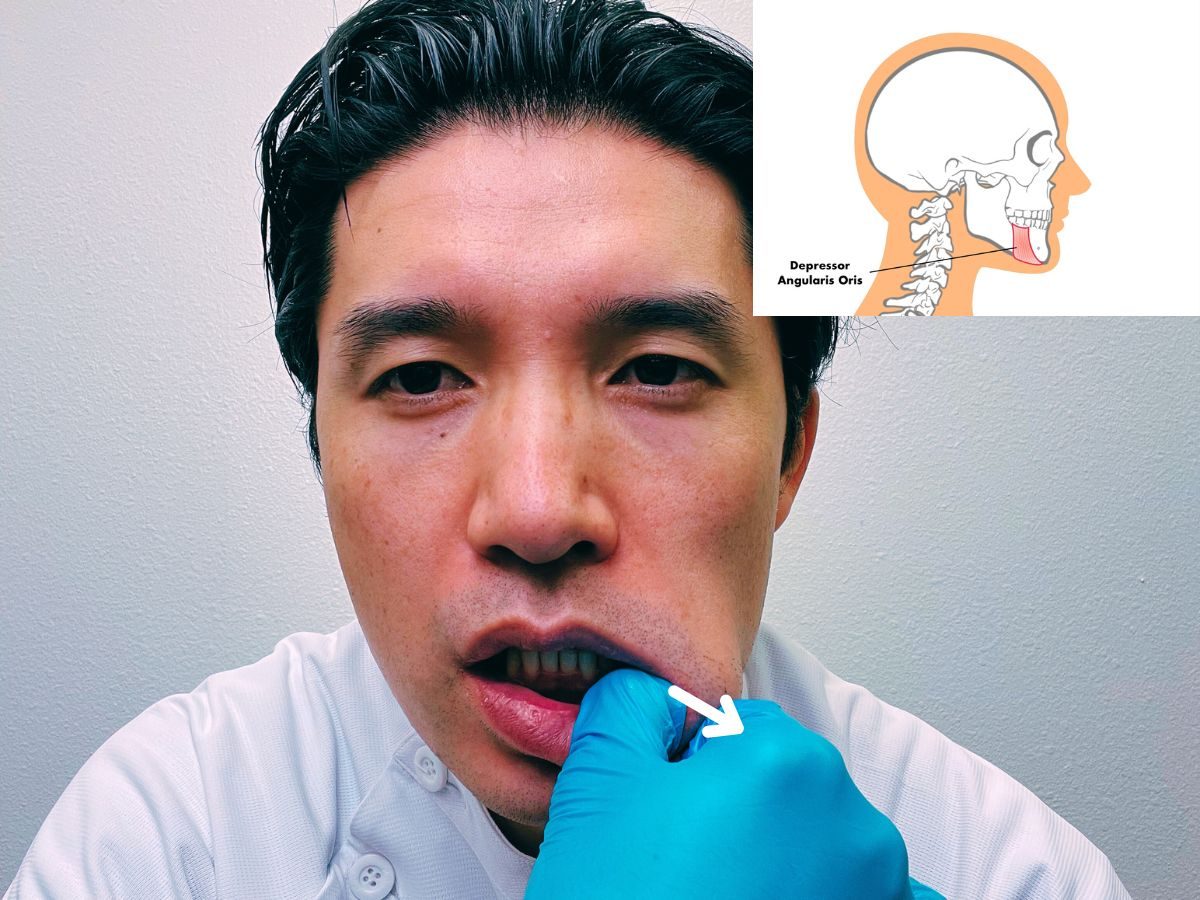
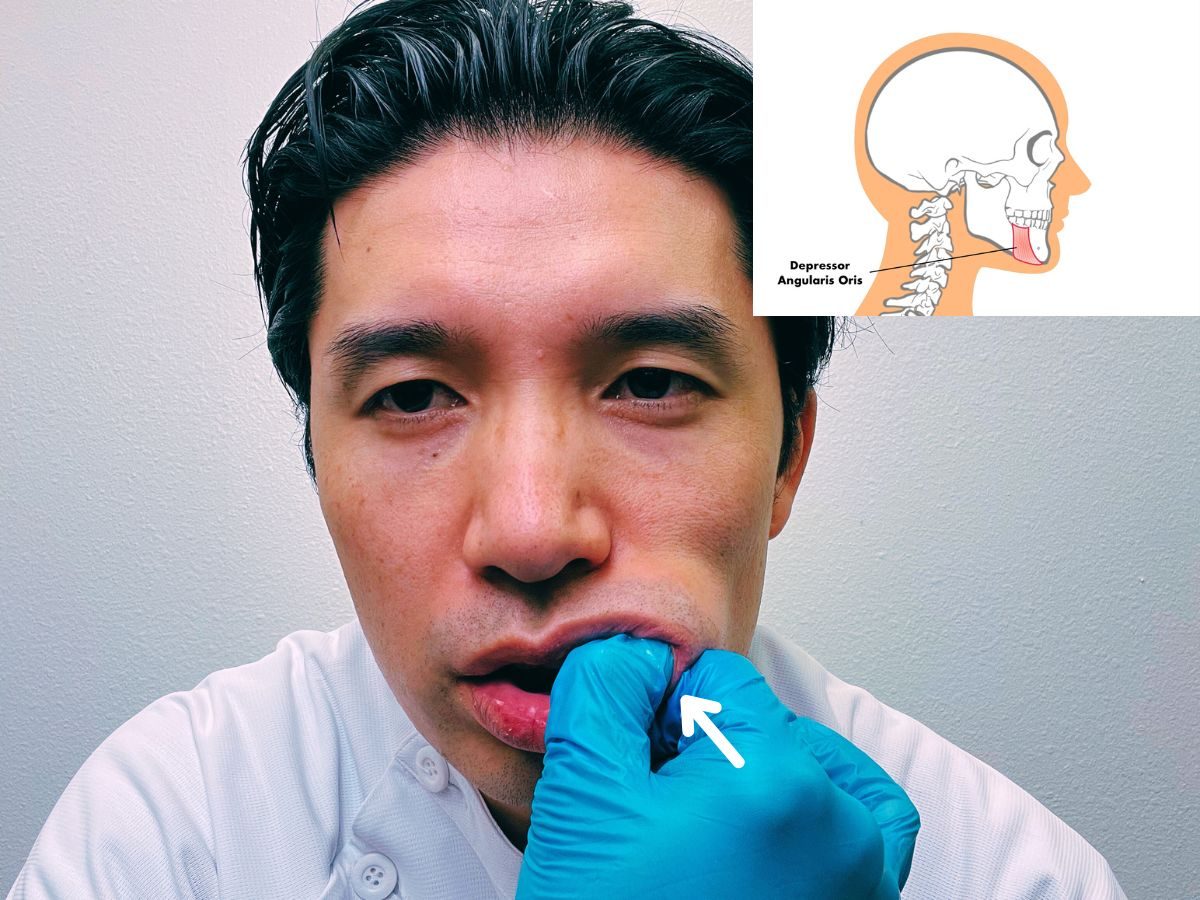
The last step is to stretch the depressor labii inferioris & depressor angularis oris. These muscles are controlling your mouth especially on the lower side. When you move your mouth downward, you use these muscles. And, it is very common that somehow these muscle doesn’t recover completely from Bell’s Palsy because the these muscle are controlled by the facial nerve marginal Mandibular branch. This branch is in the deep surface of the facial nerve and it is really takes time to heal up. Sometimes, it doesn’t completely recover. If it doesn’t recover completely, these muscles tend to contract and tense up, it sometimes gives you the dimples on the chin.
Use your thumb inside your mouth and pull diagonally towards to your mouth. You can also use the other hand to pull the opposite way so you stretch these muscle. Hold for 6 seconds and repeat this 5 more times.
How To Use A Facial Roller For Your Bell’s Palsy (10 Steps)
After you finish these stretches, I want you to use a facial roller to stimulate your muscle to relax and increase the blood flow even more. For more information, please check out my other blog post, How To Use A Facial Roller For Your Bell’s Palsy (10 Steps)
Heat Therapy
After you have done, you can apply heat pack or warm towel to release the muscle tension even more. Heat helps to increase the blood flow and soften the muscle tissue so you can apply these heat packs on your face, especially cheek, eye, and mouth, and around the ear for about 20 minutes.
Important Note
It can be highly beneficial to perform these stretches every day, as it may accelerate your healing process and help you avoid being affected by permanent symptoms that can last up to 15%. As previously mentioned, Bell’s Palsy is a disease that is a race against time. Therefore, the earlier you take care of it, the higher the chances of healing quicker and faster. For a more proactive approach, you may want to consider alternative treatments such as acupuncture, which can help speed up your natural healing ability.
Pursuing Your Health is Our Passion
Call or Text 972-777-0836
We'll be happy to answer your questions.
Is Acupuncture Effective for Bell's Palsy?
Yes. Acupuncture is very effective for Bell’s Palsy. During the initial acupuncture session, we examined your face and muscle tightness. The treatments focused on reducing inflammation and swelling and restoring movement in the face. Many studies have shown that acupuncture is incredibly practical in reducing pain and inflammation due to its ability to stimulate the body to release its natural painkillers. So, you start feeling relieved from the pain after each session.
When Should I start Acupuncture?
As a general rule of thumb, the sooner one receives treatment, the better the prognosis. Some patients come for Bell’s Palsy treatment months or even years after the initial onset, and these chronic cases are often more complex and take a much longer time to achieve results. Even then, recovery is not guaranteed.
How Often Should I Schedule Acupuncture Sessions?
Regarding the frequency of treatments, Acupuncture follows a simple rule. Acute and relatively new conditions are most effectively treated with more frequent visits, whereas chronic and old conditions can benefit from more widespread treatments. In other words, if you just had an onset of Bell’s palsy, you will probably be prescribed 2-3 treatments per week in order to get the most effective results, and chronic cases will generally come in only once a week.
If you or a loved one was diagnosed with Bell’s palsy and want to learn more about acupuncture and whether it’s appropriate for your case, send us a message through our contact page. Thank you for taking the time to read this blog post! I appreciate your interest and hope to see you again for future posts.
We understand this can be a lot of information and overwhelming: if you are looking for more support and answers, set up a free consultation with our Bell’s Palsy Specialist, Satoru Ozawa. Share your story, get your questions answered, and learn how you can set yourself up for tremendous success in achieving a healthy life.
RECENT ARTICLES
These blogs are about natural remedies, acupuncture, Chinese medicine, Chinese herbs, and health tips.
Honoring a Mentor: The Last Dance
As a practitioner, my focus is on giving you the best tips for your health. But today, I want to...
Read More
Satoru Ozawa, L.Ac, ATC
hariQ acupuncture & herbs
Licensed acupuncturist, Certified Athletic Trainer and Chinese herbal specialist. With his 10 years of experience in Oriental Medicine, he will recommend the best natural Remedies, including Acupuncture, Chinese herbs, and health tips to relieve your suffering.

